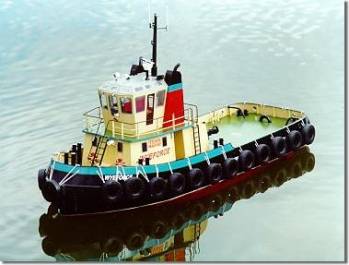
 About Model Slipway
About Model Slipway
Model Slipway was formed in 1989 by David Metcalf (who does all the research, development, design and drawings), and Lawrie White, responsible for the manufacture of the kits. The aim of the company is to produce scale model boat kits of the very best detail and quality. All models may be used as display models or with radio control and have been tested for their sailing ability before being put into production.
All kits are based on a one-piece glassfibre hull, die-cut and printed styrene, complete set of cast white metal fittings, main drawings, exploded views, assembly instruction, colour scheme. The kits are complete with rudders, tiller arms, propellers, prop shafts and tube.
Some models may appear complex but owing to the clear, simple and straightforward layout of the assembly instructions they can be built by modelers with little experience.
Items not Included in MODEL SLIPWAY Kits
R/C Equipment — Model Slipway does not supply instructions or recommendations on R/C equipment with their kits as there is such a wide choice on the market and modelers have their own preferences. It is possible to use a minimum of a 2-channel radio — one channel for the rudders and one for the motors. However, we recommend at least 3 channels, which usually means you have to purchase a 4-channel radio — one channel for the rudders (linked) and one channel for each of the motor speed controllers. Motors — We recommend the use of any 6 to 12V good quality, low drain motors such as Mabuchi 545 or 550 (not 540), or 5-pole motors (never 3-pole). We would not recommend 545's or 550's if you intend to tow with the YORKSHIREMAN.
Battery — We recommend fitting a 12V battery which helps save loading ballast, and the motors are more efficient at 12V. You can use a 6 or 12V battery and one or two batteries.
Paints — All paints used on the prototypes were "Humbrol" enamels, either sprayed or brush painted on. When complete, the models were painted with two coats of ordinary "satin" finish polyurethane varnish. A model colour scheme is supplied with the kits.
Glues and Fillers — For Glassfibre to plastic joining, we recommend a 2-part epoxy resin. For plastic to plastic, ordinary polystyrene adhesive. For white metal to white metal, 2-part epoxy resin or thick cyanoacrylate. For white metal to plastic, 2-part epoxy resin or thick cyanoacrylate. Should you require to fill any holes or gaps, we suggest you use a spot body filler or similar on the glassfibre hull or plastic components.
